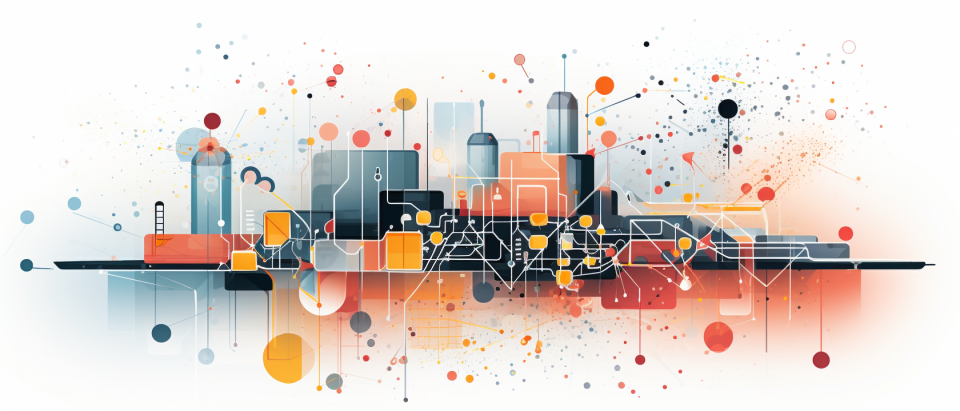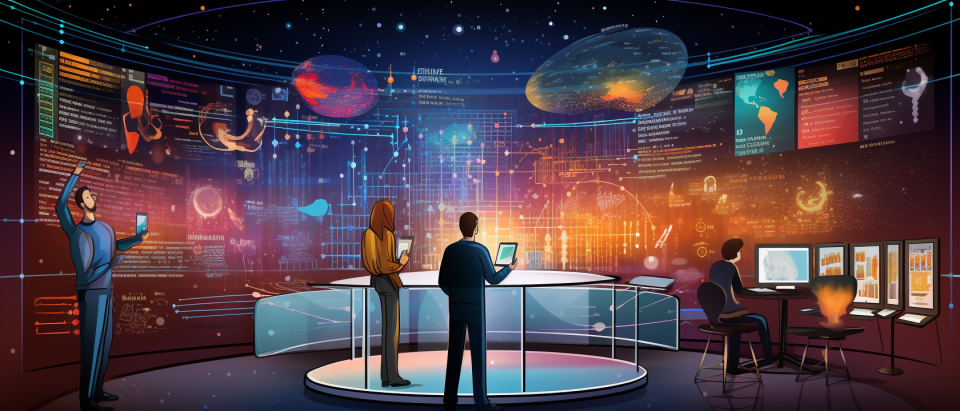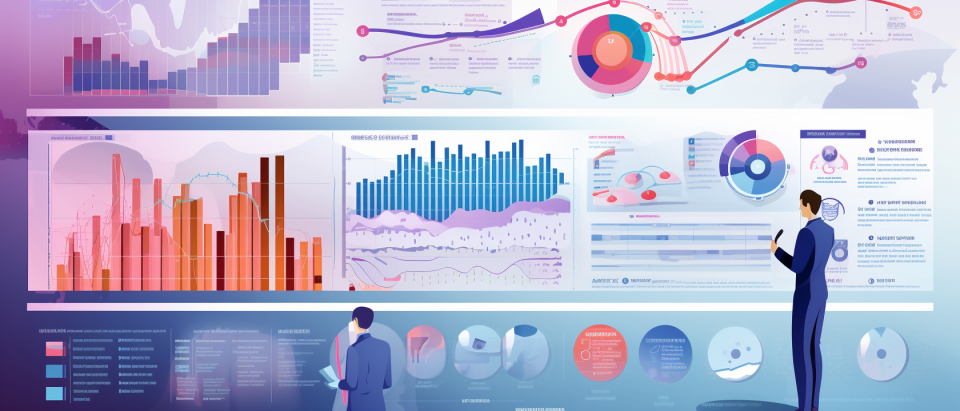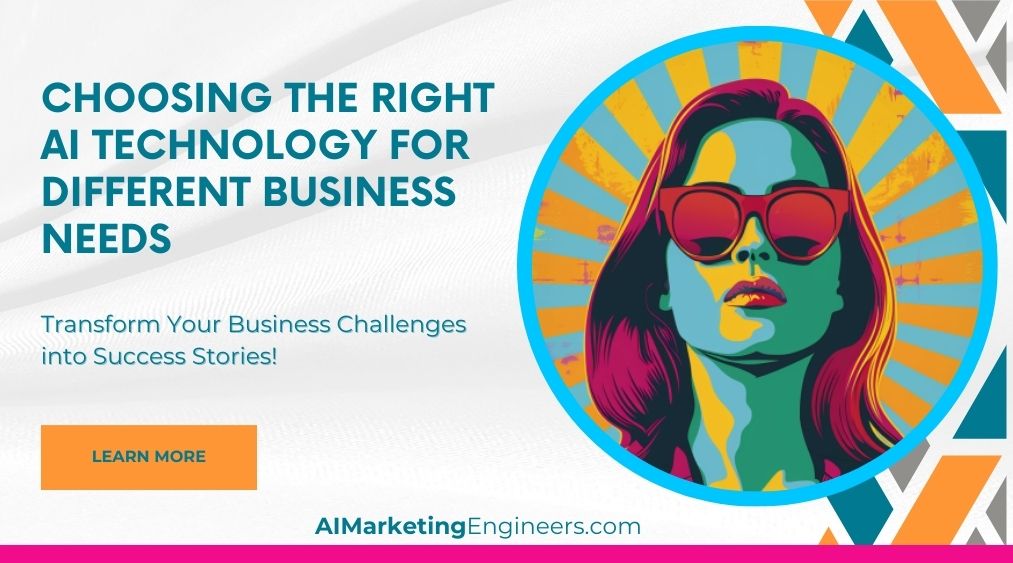Key Takeaways
✅ Data science and AI enable businesses to dissect and harness data, paving the way for a data-centric approach to corporate strategy and operations.
✅ The applications of data science and AI span various domains, such as predictive analytics, natural language processing, and computer vision, each contributing to enhanced organizational productivity and innovation.
✅ Implementing these technologies necessitates a clear understanding of the available tools and frameworks and their potential use-cases within an organization.

Introduction
In an ever-evolving digital landscape, the pivot towards data-centric business strategies has placed Data Science and Artificial Intelligence (AI) at the forefront of innovation. Businesses across the globe are harnessing the power of data and AI to not only streamline their operations but also to outpace competitors and deliver exceptional customer experiences. This article sheds light on the dynamic realms of data science and AI, unraveling their core principles, transformative applications, and the significant value they add to the corporate world.
From discerning patterns in vast datasets to fostering intelligent machines that think and act with near-human discernment, we will explore the breadth of possibilities these technologies unlock. As we delve into the intricacies of data science and AI, we emerge with a clear vision of how they are redefining the very essence of business strategies and customer engagement. With practical illustrations such as AMTR's pioneering efforts, we see firsthand the real-world impact and potential of these tech marvels within the corporate sphere.
Join us as we navigate the remarkable journey of data science and AI, where every byte of data and every intelligent algorithm is a stepping stone to a future ripe with opportunity—a future where businesses are not just market participants but architects of innovation and progress.
What is Data Science?
Data science is a multifaceted field that leverages statistics, machine learning, and computer science to analyze complex datasets. Its goal is to draw actionable insights and support decision-making. Harnessing a combination of skills, data scientists manipulate data to uncover trends, patterns, and relationships that were previously hidden.
Key Applications of Data Science
A. Predictive Analytics
Predictive analytics uses historical data to forecast future outcomes. By leveraging these insights, companies can anticipate market trends, customer behavior, and potential risks.
B. Descriptive Analytics
This involves the interpretation of historical data to understand changes and trends over time. Descriptive analytics aids in summarizing past events, primarily to understand what has happened.
C. Diagnostic Analytics
By examining data to understand the causes and events, diagnostic analytics helps organizations to discover the reasons behind past successes or failures.
D. Prescriptive Analytics
This area focuses on finding the best course of action for a given situation. It uses algorithms and machine learning to suggest decision options and their potential outcomes.
E. Discovery Analytics
Discovery analytics is about uncovering insights without a specific question in mind. It often leads to unexpected findings and new questions that can drive further exploration.

What is AI?
Artificial Intelligence (AI) is a broad branch of computer science focused on building machines that can simulate human intelligence processes, including learning, reasoning, and self-correction.
Designed for specific tasks, narrow AI operates under a limited pre-defined range and is the most commonly used form of AI in various industries today.
This refers to AI with the ability to understand and learn intellectual tasks as a human would. While it's a target for the future, it's not yet a reality.
Key Applications of AI
A. Computer Vision
AI techniques enable computers to understand and interpret visual information from the world around us, such as recognizing objects and faces in images.
B. Natural Language Processing (NLP)
NLP allows computers to understand, interpret, and generate human language, making it possible to have more natural interactions between humans and machines.
C. Chatbots
Powered by AI, chatbots simulate human conversation and are increasingly used for customer service and information acquisition.
D. Robotic Process Automation (RPA)
RPA technology uses AI to handle repetitive tasks that were once performed by humans, leading to increased efficiency and reduced human error.
Data Science and AI Technologies
A. Statistical Programming Languages
Languages like R and Python serve as foundational tools for data analysis, offering libraries and frameworks specifically designed for data science and AI.
B. Machine Learning Algorithms
Machine learning involves algorithms that allow computers to learn from and make predictions about data. This includes supervised, unsupervised, and reinforcement learning techniques.
C. Deep Learning Frameworks
Frameworks like TensorFlow and PyTorch are critical for developing and deploying large-scale neural networks, often used in AI applications that require pattern recognition and classification.
D. Predictive Analytics Tools
Software platforms such as SAS and SPSS offer advanced statistical tools to analyze data for making predictions about future events.
E. Artificial Neural Networks
Inspired by biological neural networks, these systems learn tasks by considering examples, without task-specific programming.

How Data Science and AI Drive Business Value
Data-driven insights allow for more accurate and faster decision-making processes, a benefit directly related to increased business value.
A. Enhanced Customer Engagement
AI tools like virtual assistants and chatbots facilitate personalized customer interactions, driving customer satisfaction and loyalty.
B. Enhanced Operational Efficiency
Through automation and optimized workflows, AI and data science significantly reduce operational costs and improve productivity.
C. Insight-Driven Product Development
AI and data science power innovation by providing insights that lead to new product ideas and improvements on existing ones.

Case Study: How Data Science and AI Drive Business Value at AMTR
Utilizing data science and AI, Amtrak (AMTR) optimizes travel experiences and operational efficiency. Their machine learning algorithms analyze passenger data to predict travel issues and improve scheduling, contributing to enhanced customer satisfaction and increased revenue.
AI Marketing Engineers Recommendation
In the current landscape of marketing, the utilization of Data Science and AI has become indispensable in gaining a competitive edge. As a modern-day business or marketing unit, tapping into the latest advancements in AI can streamline operations, personalize consumer experiences, and significantly boost ROI. Here's a strategic outline to guide you through integrating AI into your marketing endeavors effectively:
1. Invest in AI-powered Analytics Tools
AI analytics platforms like Google Analytics, Adobe Analytics, and IBM Watson provide real-time insights into customer behavior. These tools leverage machine learning to predict trends, segment customers, and optimize marketing campaigns. By utilizing these tools, you’ll be able to make data-driven decisions and adjust strategies dynamically.

2. Enhance Personalization with AI
Customers today expect personalization at every turn. AI-driven recommendation engines can analyze browsing patterns, purchase history, and other customer data to present personalized offerings, content, and product recommendations. Tools like Dynamic Yield or RichRelevance can assist in executing these strategies at scale.
3. Optimize Digital Advertising with AI
Programmatic advertising platforms use AI to buy ad space in real-time, targeting specific audiences with incredible accuracy. AI helps in reducing ad spend wastage by pinpointing the right customers and optimizing bidding strategies. Consider platforms like The Trade Desk or AdRoll for these capabilities.
4. Embrace Predictive Analytics
Predictive analytics tools can forecast future consumer behavior, market trends, and campaign performance. Implementing tools such as Salesforce Einstein or Pega can give you foresight into the potential success of your products or campaigns, allowing for preemptive strategy adjustments.
5. Employ AI for Content Creation
AI-driven content creation tools like GPT-3 or Wordsmith can generate write-ups, reports, and even personalized emails at a large scale, saving time and resources. They can also ensure content is optimized for SEO, helping to increase organic reach.
6. Improve Customer Service with AI Chatbots
Chatbots are the front-line of customer interaction in many digital businesses. Leveraging AI in chatbots can provide consumers with instant support, improving user experience. Solutions like Intercom or Drift can help automate and personalize customer interactions.
7. Monitor Social Media with AI
Social listening tools powered by AI, such as Brandwatch or Talkwalker, provide insights into brand perception, trending topics, and customer sentiment across social platforms. Utilizing these can help in adjusting marketing strategies and engaging with your audience effectively.
8. Understand Visual Data with AI
AI can interpret visual content to gauge brand visibility and customer interaction. Visual AI technologies like Clarifai or Google Vision API can analyze images and videos across digital platforms to provide insights into brand placement, logo visibility, and customer engagement.

Final Thoughts
The revolution in AI has given birth to a new breed of marketing experts—AI Marketing Engineers—who blend the creativity of traditional marketing with the precision of data science. As a result, marketing departments are no longer guessing games; they are data-informed, strategy-driven units that reap the benefits of AI's analytical prowess.
To gain optimum results, it’s crucial to stay updated with the evolution of AI tools and methodologies. Consider collaborating with specialized AI marketing service providers, attending relevant conferences, or joining industry-specific online communities to exchange insights and best practices.
By implementing these recommendations, your marketing entity can evolve into a more efficient, proactive, and customer-centric operation, ultimately leading to sustainable growth and an enhanced customer experience.
Conclusion
In the dynamic landscape of today's business environment, data science and artificial intelligence (AI) stand out as critical components for organizational success. The overview provided in the article underlines the importance of understanding the foundational elements of these potent technologies and their capacity to revolutionize decision-making processes, customer interactions, operational efficiency, and product innovation.
The field of data science, with its rich toolkit encompassing statistical analysis, machine learning, and various predictive models, furnishes businesses with the ability to not only interpret vast amounts of data but also to anticipate trends and prescribe actionable strategies. It's through these methodologies that businesses can navigate through the realms of predictive, descriptive, diagnostic, prescriptive, and discovery analytics to extract tailored insights aligning with their objectives.
Technologies underpinning these fields, such as statistical programming languages, machine learning algorithms, deep learning frameworks, predictive analytics tools, and artificial neural networks, constitute the backbone of modern data-driven initiatives. Their correct application can lead to significantly improved decision-making and customer experiences, as evident in the case study of Amtrak, where data analytics and AI led to enhanced operational predictions and customer service enhancements.
In essence, data science and AI are not merely buzzwords but fundamental instruments for business growth and sustainability. Companies that embrace these tools have the potential not only to elevate their current operations but also to pave the way for the innovations and market-leading positions of tomorrow.

FAQs
Question 1: What is the difference between data science and AI?
Answer: Data science is a multifaceted field that utilizes statistical and computational techniques to analyze and interpret vast sets of data. In contrast, artificial intelligence (AI) is the branch of computer science that is concerned with the creation of systems capable of performing tasks that typically require human-like cognition, such as making decisions and solving problems.
Question 2: What skills do I need to work in data science or AI?
Answer: To work effectively in data science or AI, one should possess a solid blend of analytical skills, programming proficiency, and problem-solving abilities. Essential knowledge areas include statistics, machine learning algorithms, and familiarity with common data analysis tools, such as Python and R programming languages.
Question 3: How can I learn data science or AI?
Answer: Data science and AI can be learned through various avenues, including online platforms offering courses (such as Coursera, Udemy, and edX), interactive coding and data science platforms (e.g., Kaggle), education bootcamps, and traditional academic degree programs at educational institutions.
Question 4: What are some common job titles in data science and AI?
Answer: In the field of data science and AI, prevalent job titles include Data Scientist, Machine Learning Engineer, Data Analyst, and Data Architect.
Question 5: What industries can benefit from AI and data science?
Answer: AI and data science have applications across virtually all industries. Some of the key sectors that stand to gain from these technologies include healthcare, finance, manufacturing, and retail, where they can significantly enhance decision-making, streamline operations, and facilitate the creation of innovative products and services.
Question 6: What are some challenges facing data science and AI?
Answer: Key challenges in the realms of data science and AI encompass issues relating to data quality, such as the presence of incomplete or inaccurate data sets, and AI bias, which can result in skewed or unjust outcomes due to prejudiced algorithms or biased data inputs.
Question 7: What is the future of AI and data science?
Answer: The trajectory of AI and data science is expected to increasingly converge with other disciplines such as business, healthcare, and beyond. As these technologies continue to advance, their influence will become even more pervasive in shaping our future, driving innovation, and tackling multifaceted societal challenges.








